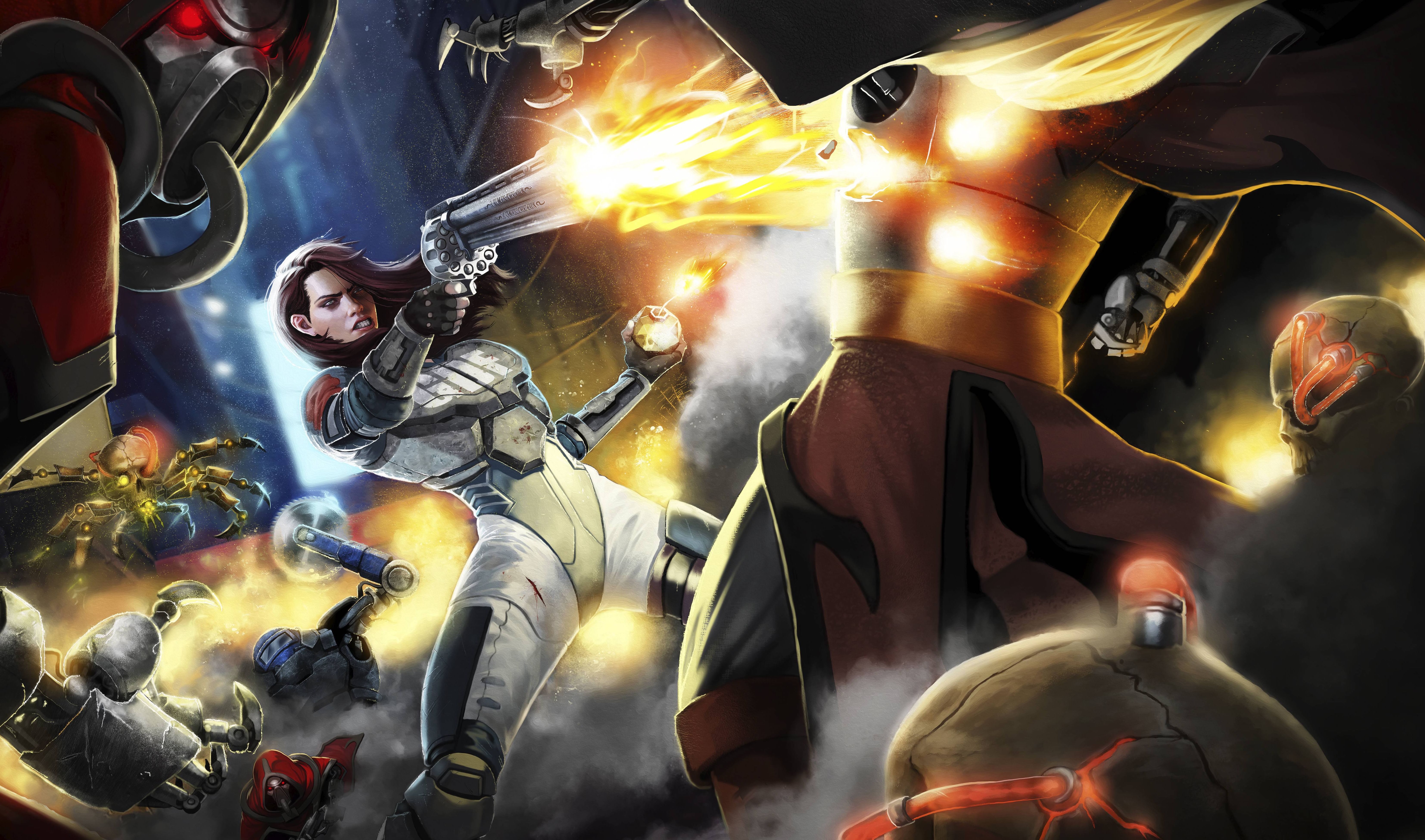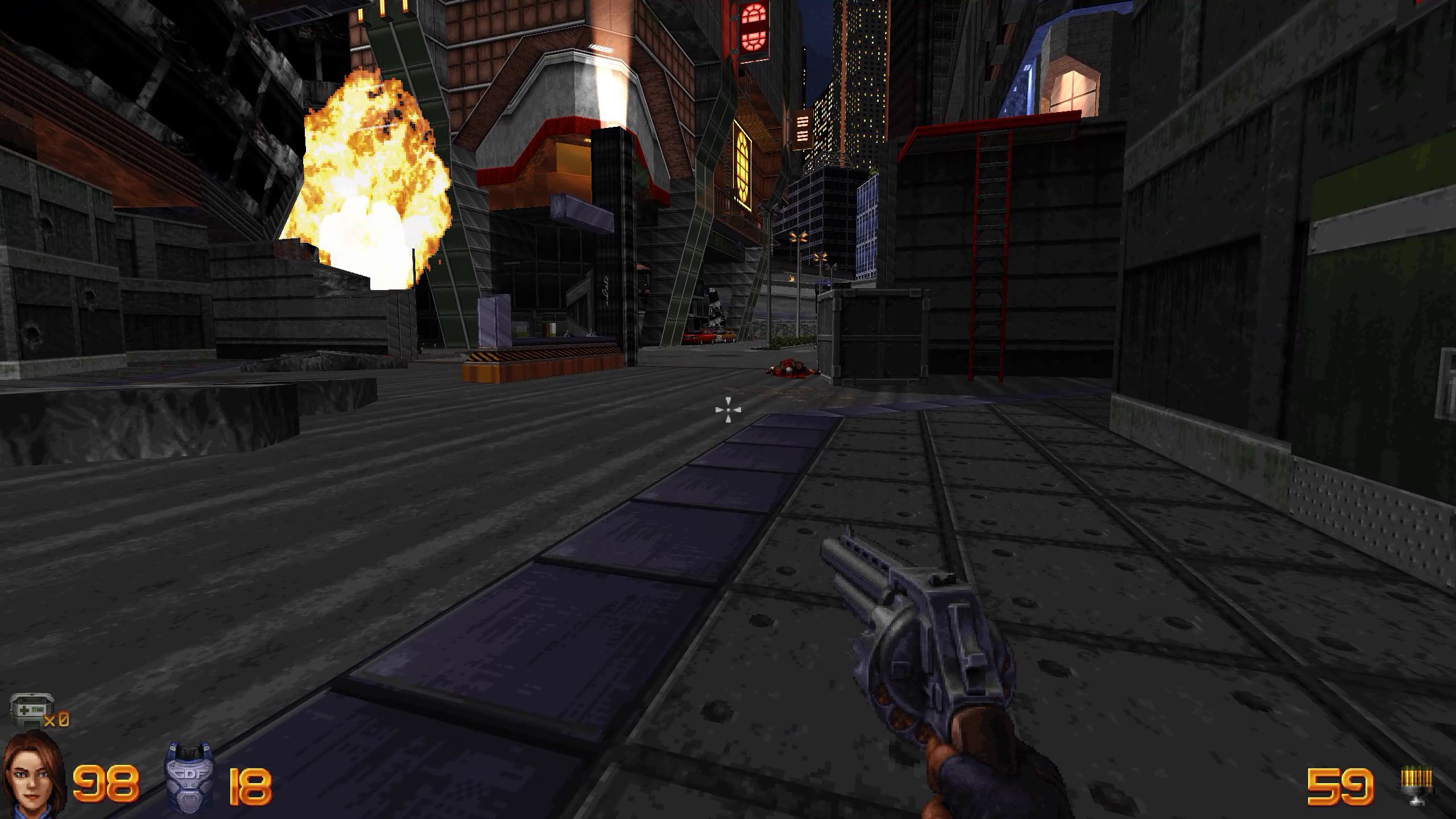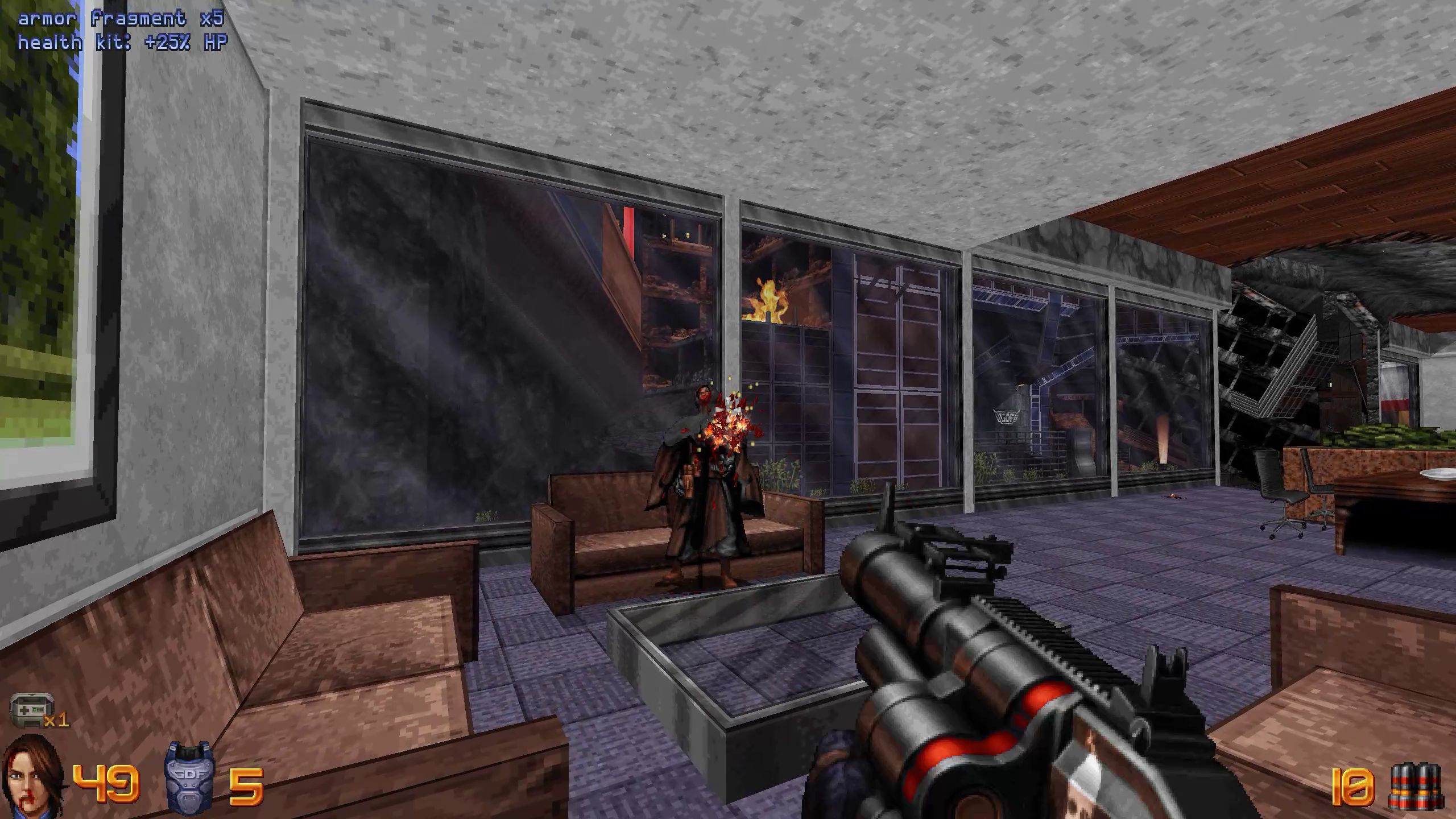The joy of returning to the early days of the FPS in Ion Maiden
Made with the same engine as Duke Nukem 3D, this old school shooter understands what was great about the 90s.

Is it the run speed? The clarity of its blocky, too-big architecture? Is it the immediacy of the guns, which go BANG without ceremony and send bodies flying? Is it the anything-could-happen sensation every time you turn a corner? The spent shells, bloody footprints and debris you leave behind after every encounter?
For those of a certain generation, playing Ion Maiden is like coming home. I spent the first half of the 1990s experiencing the flowering of the first-person shooter, from Wolfenstein 3D to Doom and then, my god, to Duke Nukem 3D. I progressed from "I'm seeing what it's like to shoot Nazis through my own eyes!" to "It's like being there and I'm terrified!" to "I'm playing the dumbest movie in the world and I get to flush the toilets!"
While Doom definitely did it best, I still have a place in my heart for Duke 3D's eye for mundane detail and the dynamic nature of its levels. Playing Ion Maiden takes me right back. Now in Early Access, it features a short demo campaign which will be joined by a full campaign and multiplayer in the final release, and it's the first commercial game to use Duke Nukem's Build engine—by way of enhanced source port EDuke32—in 19 long years. Since World War II GI, in fact. It's fascinating to see its best elements adapted and enhanced for the modern age.

The best Build levels were all about realism, offices and theaters and city streets, and they were also about smashing them up, sending buildings crashing to the ground and blowing up walls. That's exactly what Ion Maiden does too, maintaining Build's classic crude geometry but featuring more of it than Duke 3D ever could. The first large area of the game is a wide Washington DC street, with crashed cars and side streets blocked by collapsed high rises. At the end is a subway entrance, and along one side are shops which blow open when you venture near, disgorging gun-wielding terrorists.
...you can kick the heads of gibbed enemies around.
It's a pleasure to play a game that changes its space so much as you run through it, a reminder of how static level design is today. When your world is made of massive flat planes rather than intricately modeled 3D detail, it's a lot more simple to rip a hole through a wall and tell you that's where you're going next, and that means that every time you press a big button or simply enter a new hallway you can expect things to go wild.
But while the levels are simple in form, they're filled with stuff. Secrets for a start, accessed through air vents and under water, and also material details. Offices feature rows of desks with screens you can turn off and on. The light switches work, and you can push office chairs around. Lots of things are destructible, like glass and fire extinguishers, and you can kick the heads of gibbed enemies around.
Duke 3D was pretty much built on the principle that if something exists you should be able to mess with it, and that's the same for Ion Maiden. The result is a far cry from the non-interactive nature of most modern shooter level design, which might have a handful of physics-enabled objects but few crafted details to play around with. You feel a flash of connection with a game's designers when you realize they foresaw that you'd want to hit an office chair with a nightstick to push it across the room, and that they thought to make it visibly damaged before being completely destroyed.
The biggest gaming news, reviews and hardware deals
Keep up to date with the most important stories and the best deals, as picked by the PC Gamer team.
And then there's the size of the levels. Ion Maiden's scale is ridiculous, with everything too wide and too tall, but that's totally fine because of your equally ridiculous run speed and jump height. You don't need special abilities to traverse the world, not even a sprint meter, because you can just run everywhere. Ion Maiden has the old school's vital kineticism, a sense of speed that more earthbound modern shooters has forgotten. I'm not saying that making everything fast is ideal in all cases, but when environments are this enormous zooming through them feels great.
...there's refreshing certainty to your actions, born of a simpler and less nuanced age.
But the key pleasure for me is its weapons' sense of connection. In conceptual terms, they're nothing special: a six-shooter, a shotgun, an SMG and the Bowling Bomb, a grenade that rolls along the ground. But in the hands they're tools for the classic FPS power fantasy. It's the way they enact instantaneous cause and effect, with the shot hitting the enemy and sending blood flying without a pause. Enemies in early FPSes tended to have only two states, alive and dead. In contrast, today's rich animation and ragdoll physics allow a third state to exist in between as enemies clutch their wounds, flinch and fall. It enhances the realism but it also makes you constantly second-guess your shots.
In Ion Maiden there's refreshing certainty to your actions, born of a simpler and less nuanced age. To underline that your character, Shelly 'Bombshell' Harrison, occasionally shouts catchphrases like, "Clean up on aisle your ass!"
Ion Maiden has a strange background. It's a prequel to developer Interceptor Entertainment's little-loved 2016 top-down shooter Bombshell, which featured the same star, its roots in a 'Digital Retro' extra promised for the Digital Deluxe release of Bombshell. Then Interceptor went bankrupt, or restructured, or something (it's hard to tell, but they were re-established as Slipgate Studios), and Ion Maiden was born, with greater ambitions and a name designed to distance itself from its origin.

And, like Duke Nukem 3D, it's published by 3D Realms, who published Bombshell, too. But it's only 3D Realms by name, logo and IP: after a decade or so of the doldrums followed by legal battles with Take-Two and Gearbox around Duke Nukem Forever, 3D Realms was bought by a Danish holding company called SDN Invest, owned by one of the backers of, as it happens, Interceptor Entertainment. Uh, yeah. Anyway, the point is, all this weird wrangling has in Ion Maiden's case allowed a bunch of Build modders to release a commercial game. And that is good.
Today, the Doom scene continues to flourish with new engine features, maps and conversions, from The Adventures of Square to Brutal Doom, so it's only fair the spirit of Duke Nukem 3D should be raised as well. I'll always love Doom more for its tighter and more elegant nature, but it's a trip to experience Build's dumb, dynamic, flashy and clever charms once again.
Ion Maiden is available on Steam.

